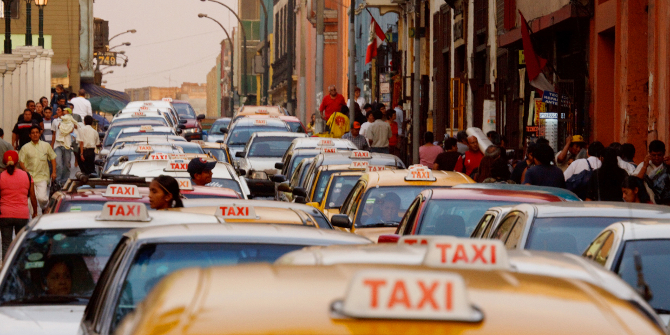Lima, one of Latin America’s largest and most vibrant capitals, faces daily mobility challenges familiar to most sprawling urban centers: heavy traffic, long commute times, safety concerns, and inconsistent public transportation coverage. Over the last decade, however, the rise of aplicativos de taxis en Lima and ride-hailing apps has transformed the way people move around the city. These digital platforms not only offer more convenience and transparency but also help reshape Lima’s transportation culture by emphasizing safety, reliability, and efficiency.Today, several major taxi apps compete to serve residents and visitors alike in the Peruvian capital. Through intuitive features, affordable pricing, and real-time connectivity, these platforms have become an essential part of daily mobility. Below is a closer look at how the top taxi apps are transforming transportation in Lima and why they have become indispensable to modern urban life.
Enhanced Safety and Trust for Passengers
Safety has long been one of the biggest concerns associated with traditional taxis in Lima. Many passengers once faced issues such as lack of identification, irregular fares, and unreliable service. Taxi apps have dramatically changed this scenario.
- Driver identity verification
- GPS tracking throughout the trip
- Real-time vehicle information
- Share-trip features for friends and family
- Rating and review systems that encourage professionalism
These features create a higher level of trust between passengers and drivers. As a result, women, students, and tourists feel more secure using app-based taxis than hailing one on the street. The focus on transparency and accountability has raised overall expectations for transportation safety in Lima.
Cabify: A Popular Choice for Comfort and Business Travel
Cabify remains one of the most widely used taxi apps in Lima, known for its emphasis on comfort, professionalism, and premium service. Its user interface is simple, and its pricing system tends to be clear and predictable—two factors that appeal to both locals and international visitors.
Cabify stands out because it caters not only to daily commuters but also to business travelers seeking reliable transportation. Features such as scheduled rides, corporate accounts, and driver training programs set Cabify apart from traditional taxis. Its presence in multiple Latin American cities also provides familiarity to frequent travelers across the region.
Uber: Speed, Availability, and Global Functionality
Uber’s introduction to the Peruvian market brought immediate changes to urban mobility in Lima. Its biggest advantage is availability—drivers are widespread, response times are often short, and the platform is familiar to millions around the world. Tourists especially appreciate the ability to use the same app they rely on at home, without struggling with language or payment barriers.Uber’s automatic fare calculation system, route optimization, and cashless payments contribute to more efficient trips. The app has also invested in safety measures such as PIN verification, audio recordings, and 24/7 support, which further strengthen its role in Lima’s transportation ecosystem.
InDriver: Empowering Users Through Negotiable Fares
InDriver has become a unique and disruptive player in Lima’s ride-hailing market. Unlike Uber or Cabify, which use fixed dynamic pricing, InDriver allows passengers to propose their own fare and negotiate directly with drivers. This feature resonates with many Lima residents who prefer more control over ride costs.The platform’s negotiation model encourages competitive pricing, especially during peak hours. It also allows users to select drivers manually based on ratings, distance, and vehicle type. For those who want budget-friendly options and flexibility, InDriver has quickly become a top choice.
Beat (Before Exit): A Former Favorite That Influenced the Market
Although Beat officially ceased operations in several countries, including Peru, its influence remains significant in the evolution of taxi apps in Lima. Known for fast service and an aggressive expansion strategy, Beat helped increase competition in the market. This competitive pressure pushed other apps to improve their services, lower fares, and adopt new technologies. Its legacy continues in the form of innovation and passenger expectations that continue shaping today’s platforms.
Improved Traffic Flow Through Data and Routing Technology
Taxi apps not only help passengers—they also influence city mobility structures. By using data analytics, mapping systems, and AI-driven routing, these apps help vehicles avoid heavily congested areas. Although traffic remains a major issue in Lima, ride-hailing technology has contributed to:
- Shorter waiting times
- Reduced time spent searching for passengers
- More efficient distribution of vehicles across districts
For a city as large and complex as Lima, these improvements represent meaningful progress toward smarter mobility.
Contribution to Economic Opportunities
Taxi apps have also created new income possibilities for thousands of Lima residents. Driving for platforms like Uber, Cabify, or InDriver has become a flexible way to earn money, supplement income, or work full-time. This shift has major implications:
- Lower barriers to employment
- Opportunities for car owners to generate income
- Increased competition leading to better service quality
Promoting a Culture of Digital Transportation
One of the most important transformations is cultural. Lima residents are increasingly comfortable using digital tools for everyday tasks, including transportation. Taxi apps encourage:
- Cashless payments
- Digital receipts
- Planning trips through mobile devices
- Trusting technology for safety and navigation
Challenges and the Road Ahead
While taxi apps have improved mobility, challenges remain. Traffic congestion is still severe, regulatory frameworks continue to evolve, and competition between platforms creates inconsistencies in pricing and service availability. Ensuring driver welfare, preventing unsafe driving practices, and creating fair regulations are essential steps for the future.Yet the overall impact is undeniably positive. Taxi apps have brought structure, modernization, and transparency to a sector that once struggled with reliability and safety issues.
Conclusion
The rise of taxi apps in Lima represents a major transformation in how people move around the city. Platforms like Uber, Cabify, and InDriver have improved safety, efficiency, and convenience for millions of passengers while creating new economic opportunities. As Lima continues evolving into a more connected and technologically advanced city, these digital transportation tools will play an increasingly important role in shaping its urban mobility future.







